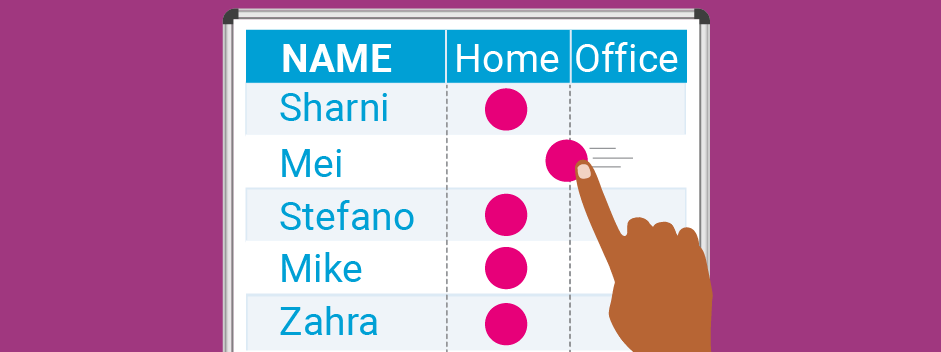Research for SEEK shows that over half (54%) of workers expect a hybrid model of working in 2022. This gives them the flexibility to get their work done when and where they're most productive.
It may include a mix of office-based and remote work, plus the freedom to choose the hours that suit each individual - so long as they meet the requirements of the job. So, how can you give your staff the work arrangements that they really want?
Hybrid to hit the mainstream
Beyond the headline number, the research also shows that more than a third of Australians expect to work a less traditional 9-5 day and 40% expect to be required in the office for fewer hours.
Flexibility is also on the agenda for staff with 42% expecting to see more flexible start times.
Amanda Chisholm, Principal Consultant at Kaizen Recruitment, says more workers are placing hybrid work high on their ‘must have’ list.
“Hybrid work is becoming more of an expectation than a request,” she says. “Employees also expect flexibility in terms of the hours they need to log on, because that’s generally what they’ve experienced while working from home during the pandemic.”
Chisholm adds that the past two years has also provided an opportunity for people to reflect on their values.
“Employees now want more autonomy in their role and the opportunity to deliver on all the requirements in a way that that allows them to balance what’s important in their personal lives,” she says.
Promoting your hybrid work offer
With more organisations promoting hybrid work, how can you make your offer stand out? Start by being specific in your job ads, says Chisholm.
“Candidates will become used to seeing ‘hybrid work’ in job ads, so it risks becoming a buzz term,” she says. “Be specific about what it means in your organisation. Does it mean remote working? Does that mean flexible hours to be able to deliver on projects as long as deadlines are met?” It’s important to articulate what you're offering.
Liza Viz, CEO of Beyond Recruitment, says employers should also be specific about hybrid work during job interviews.
“Candidates want to know how it works in practice at your organisation, so consider getting your team members involved during the interview process to talk about the benefits,” she says.
“I’d also recommend showing candidates around your office so they can see the kind of environment they’ll be in when they work from the office,” adds Viz. “It should still have a sense of professionalism, but people want it to feel less structured and more relaxed than it may have been before the pandemic. Show candidates that your office is a comfortable environment to work in.”
Bringing the hybrid model to life
When implemented effectively, hybrid working can be a win-win for employees and managers.
SEEK’s data shows that 64% of managers believe their teams are just as productive - or more productive - while working from home. Managers also use their time wisely while working at home, with 66% saying their own productivity remains at the same level, or even higher.
Here are some ways you can embed hybrid working in your organisation.
- Formalise hybrid working
When building your hybrid work model, Viz recommends formalising it in employee contracts. “Many candidates want to know that employers are serious about flexibility and that it’s not a passing fad,” she says. “They want to feel that it’s locked in.”
Chisholm agrees that formalising the offer can help make employees feel more secure.
“We have clients that are including hybrid policies and procedures in their formal letters of offer to highlight this feature from the outset,” she says.
- Invest in supporting technology
Chisholm also advises to invest in the technology required for seamless work experience from anywhere.
“This can be as simple as ensuring that you have the right microphones in the meeting room so that people who are calling in remotely feel that they are a proper part of the conversation,” she says.
Having the right communications tools that work for the team, and appropriate policies around how they’re used is also important.
- Prioritise work by location
Viz says that employers can also help people to structure their week by defining the work activities that may be most suitable for home or for the office.
“For instance, task-based work may be more suitable for home, whereas the office is a better environment for collaboration, team-building and coming up with ideas as a team,” she says. You may want to consider a fixed day each week where teams are in the office.
The hybrid work model may soon become business as usual with more candidates expecting it in 2022. When implemented effectively, with the right tools, it can have a positive impact on productivity and help you to attract and retain top talent. Getting it right means giving your workers, and yourself, the best of both worlds.
Source: Independent research conducted by Nature on behalf of SEEK interviewing 4800 Australians annually. Published February 2022.

